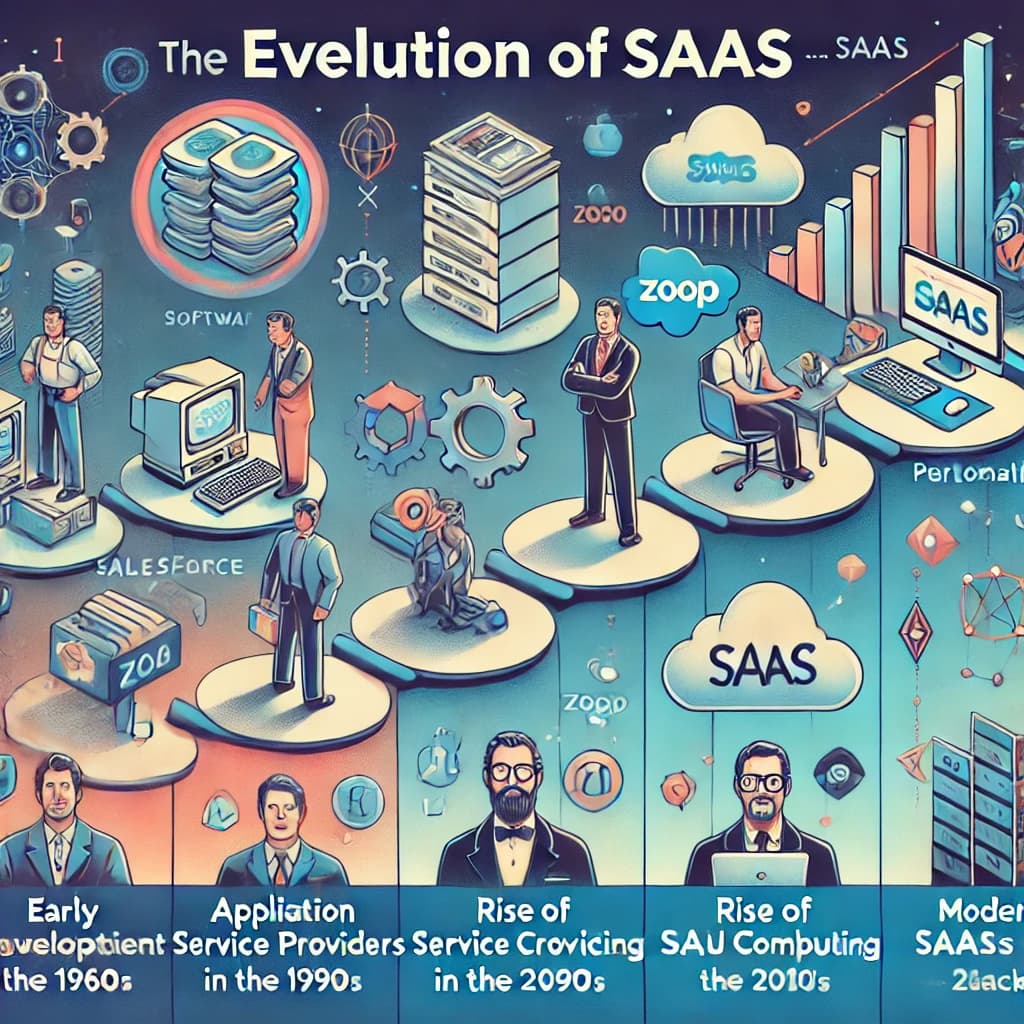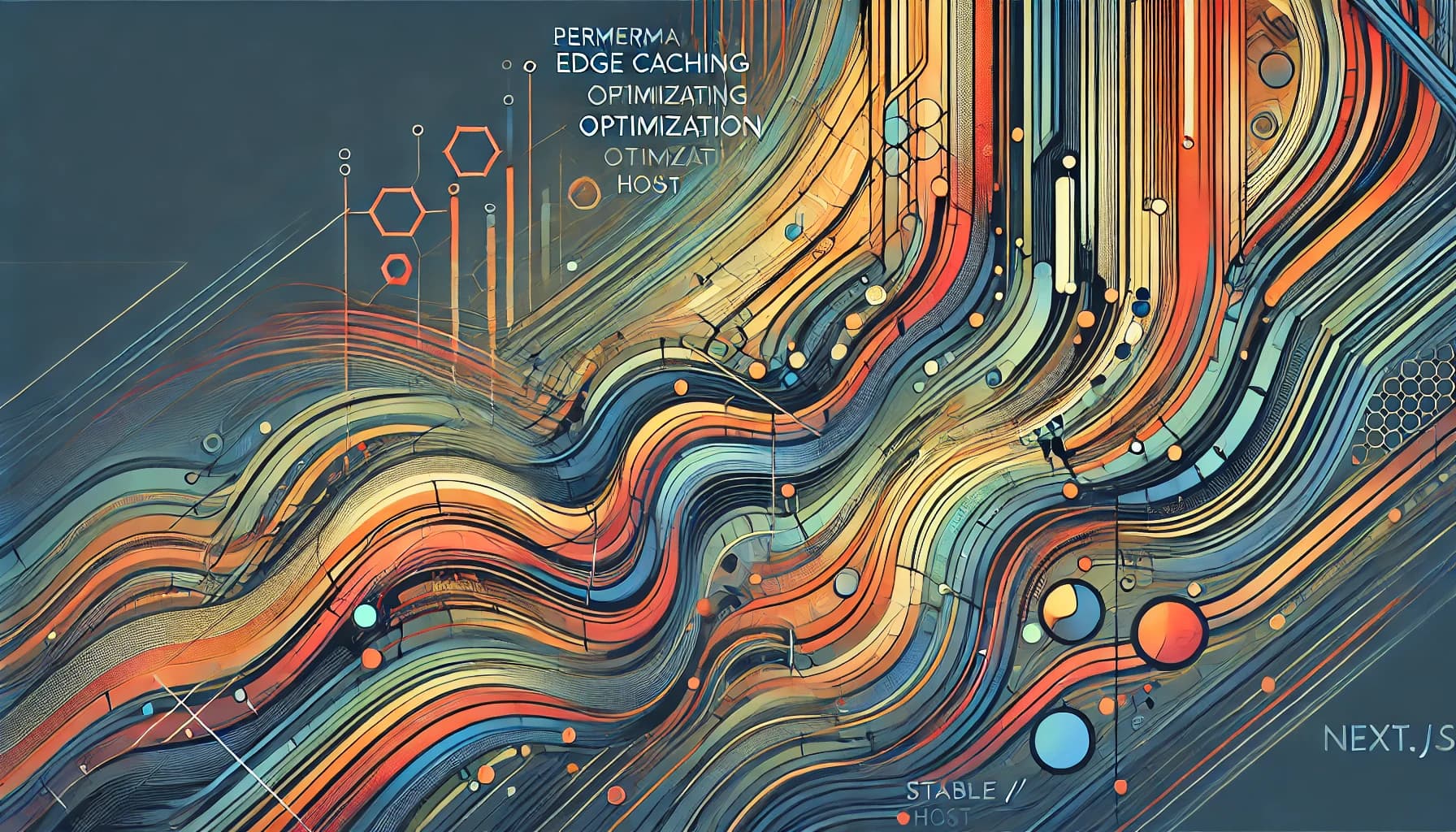
The Evolution of SaaS
SaaS has evolved significantly and will continue shaping business solutions.
test
Introduction
Software as a Service (SaaS) has transformed the way businesses operate, providing flexible, scalable, and cost-effective solutions for companies worldwide. Originally emerging as a basic model for software distribution, SaaS has now become a fundamental part of digital infrastructure. In this article, we’ll explore the history of SaaS, its progression over the years, and the trends likely to shape its future.
The Early Days of SaaS: How It All Began
1. Pre-SaaS Era: The Rise of Traditional Software
- In the 1960s and 1970s, software was largely mainframe-based and highly costly to implement.
- Companies purchased perpetual licenses, installed software on physical devices, and managed infrastructure in-house, which was resource-intensive and inflexible.
2. Application Service Providers (ASP): SaaS’s Ancestors
- In the late 1990s, Application Service Providers (ASPs) emerged as an early form of cloud computing.
- ASPs allowed companies to rent applications hosted by providers, paving the way for SaaS by introducing the idea of subscription-based software delivered over the internet.
3. Birth of SaaS: Salesforce and the 2000s
- Salesforce launched in 1999, heralding the birth of the SaaS model as we know it today.
- With a focus on customer relationship management (CRM), Salesforce popularized the “no software” motto, pioneering a model where software was hosted remotely and accessed via the internet.
Key Milestones in SaaS Evolution
4. The Emergence of Cloud Computing (2006-2010)
- The launch of Amazon Web Services (AWS) in 2006 marked a major milestone for SaaS by providing infrastructure-as-a-service (IaaS) capabilities.
- Cloud computing allowed SaaS applications to scale quickly, manage data more efficiently, and offer reliable services across global markets.
5. The SaaS Explosion (2010s)
- The 2010s saw a rapid proliferation of SaaS companies across various industries.
- Popular SaaS tools like Slack, Dropbox, and Zoom emerged, each filling a specific niche and demonstrating the adaptability of SaaS for diverse business needs.
6. Mobile-First SaaS (Mid-2010s)
- With mobile internet use overtaking desktop in the mid-2010s, SaaS providers began optimizing applications for mobile devices.
- Companies embraced a mobile-first approach, making SaaS tools accessible anywhere, anytime, transforming workforce productivity.
7. SaaS Becomes Mission-Critical (Late 2010s-2020s)
- As businesses transitioned to digital operations, SaaS became mission-critical, with enterprise resource planning (ERP), CRM, and business intelligence tools moving to cloud-based SaaS platforms.
- COVID-19 further accelerated SaaS adoption, with remote work and digital collaboration making SaaS tools essential for business continuity.
The Current State of SaaS
8. Ubiquity of SaaS in Modern Enterprises
- Today, SaaS has become indispensable across industries, with companies relying on SaaS applications for a wide range of services, from HR to project management and beyond.
- Companies can subscribe to services on a per-user or per-month basis, giving them flexibility and cost savings.
9. The Role of Artificial Intelligence (AI) in SaaS
- AI has transformed SaaS, enabling smarter, data-driven applications that learn and adapt based on user behavior.
- SaaS applications now leverage AI for everything from customer service chatbots to predictive analytics, helping businesses make more informed decisions.
10. SaaS and Integration with Other Cloud Services
- SaaS integrates with Platform-as-a-Service (PaaS) and Infrastructure-as-a-Service (IaaS) to create holistic, customizable cloud ecosystems.
- Companies use hybrid cloud solutions, combining on-premises, public, and private cloud services to meet specific needs.

Trends Shaping the Future of SaaS
11. Vertical SaaS: Industry-Specific Solutions
- Vertical SaaS focuses on niche markets like healthcare, finance, or real estate, providing customized solutions to meet industry-specific needs.
- Unlike horizontal SaaS, which serves a broad market, vertical SaaS tailors its features to specific industry regulations and workflows.
12. AI-Powered Automation and Personalization
- Future SaaS applications will likely become more autonomous, using AI to manage tasks like scheduling, forecasting, and customer support without human intervention.
- Hyper-personalization will use AI to tailor SaaS tools to individual users’ preferences and patterns, optimizing user experience.
13. The Rise of Micro-SaaS
- Micro-SaaS businesses focus on small, targeted applications that enhance larger SaaS platforms, catering to niche needs and optimizing specific workflows.
- Often created by smaller startups or independent developers, Micro-SaaS can be an effective solution for businesses seeking highly specific functions.
14. Increased Focus on Security and Compliance
- With SaaS handling vast amounts of sensitive data, security and compliance are becoming critical.
- SaaS providers will increasingly incorporate built-in compliance features to help businesses adhere to regulations like GDPR, HIPAA, and others.
15. The Evolution of Pricing Models: Pay-as-You-Go and Freemium Models
- SaaS pricing models are becoming more flexible, with pay-as-you-go and freemium models becoming more common.
- This approach allows businesses to start with basic features for free and upgrade as needed, making SaaS more accessible to smaller businesses.

Predictions for the Future of SaaS
16. Decentralized SaaS and Blockchain Integration
- Blockchain technology could provide decentralized solutions for SaaS, enhancing transparency, security, and control over data.
- Decentralized SaaS could revolutionize industries requiring high data integrity, such as finance and healthcare.
17. Serverless SaaS Architecture
- Serverless computing offers cost-effective, scalable infrastructure, eliminating the need for traditional server management.
- SaaS providers using serverless architecture can enhance application performance while reducing operational complexity.
18. Expansion of the Global SaaS Market
- SaaS is expanding globally, with emerging markets adopting cloud solutions at an accelerating pace.
- Improved internet access and infrastructure in developing countries will drive further SaaS adoption across regions like Asia, Africa, and Latin America.
19. Low-Code and No-Code Platforms in SaaS
- Low-code and no-code platforms will empower non-technical users to create custom SaaS applications, democratizing software development.
- This shift will allow businesses to quickly adapt SaaS tools to their specific needs, enhancing customization without extensive coding knowledge.
20. Future-Proofing Through Sustainability and Environmental Responsibility
- As companies strive to reduce their carbon footprint, SaaS providers are expected to emphasize eco-friendly practices.
- Future SaaS data centers may incorporate green technologies, such as renewable energy, to appeal to environmentally-conscious customers.
Conclusion
The journey of SaaS from its early days to its current state demonstrates its adaptability and transformative potential. As SaaS continues to evolve, trends like AI integration, industry-specific solutions, and increased focus on security and compliance will further cement its role in modern business infrastructure. The future of SaaS promises even greater flexibility, customization, and efficiency, making it an essential tool for businesses navigating a rapidly changing digital landscape.
FAQs
Application Service Providers (ASPs) offer hosted software but lack the scalability, flexibility, and subscription-based model that defines modern SaaS.
AI enhances SaaS applications by enabling automation, personalization, and data-driven insights, leading to smarter, more efficient software solutions.
Vertical SaaS targets specific industries, offering customized tools tailored to industry needs, regulations, and workflows.
Security is essential because SaaS providers handle vast amounts of sensitive data, and they must protect it from cyber threats while complying with regulations.
Yes, the SaaS market is expected to grow significantly, driven by advancements in AI, cloud computing, and increased adoption in emerging markets.